In the competitive SUV market, the Dacia Duster and Suzuki S-Cross stand as compelling choices for buyers seeking practicality, efficiency, and modern features. Both vehicles have their distinct accolades, making them noteworthy contenders for anyone looking to purchase an SUV. Let's dive into a thorough comparison of the 2024 models of both vehicles.
Dacia Duster vs Suzuki S-Cross – Differences & prices compared
Two cars, one duel: Dacia Duster meets Suzuki S-Cross.
Which one wins in performance, efficiency and value for money? Find out now!
Engine and Performance
The Dacia Duster boasts an array of engine options, which includes LPG, full hybrid, and petrol mild hybrid variants, making it a versatile choice for different driving preferences. With power outputs ranging from 91 HP to 140 HP, it offers decent performance across the board. The top model reaches a 0-100 km/h acceleration in as little as 9.9 seconds and can achieve a maximum speed of 180 km/h.
On the other hand, the Suzuki S-Cross features full hybrid and petrol mild hybrid engines that provide robust performance as well, with outputs between 116 HP and 129 HP. Interestingly, the S-Cross excels in acceleration, hitting 0-100 km/h in just 9.5 seconds while reaching a top speed of up to 195 km/h in its higher variants. Both vehicles come with manual and automatic transmission options, ensuring drivers can choose their preferred driving experience.
Fuel Efficiency and Emissions
Fuel efficiency is a critical consideration in today's eco-conscious market. The Dacia Duster exhibits a range of consumption figures, with the most economical variant achieving just 5 L/100 km, while others realign around the 6.1 L mark. Meanwhile, the S-Cross offers an impressive consumption rate of 5.1 L/100 km, positioning it as one of the more fuel-efficient options in its class.
In terms of emissions, the Duster's CO2 figures range from 114 g/km to 147 g/km, depending on the variant chosen. Conversely, the S-Cross performs admirably well with CO2 emissions as low as 116 g/km. Thus, the S-Cross edges out slightly in offering a greener option without compromising performance.
Dimensions and Interior Space
Both SUVs are designed to accommodate five passengers comfortably, but their dimensions vary slightly. The Dacia Duster measures 4343 mm in length and 1813 mm in width, while the Suzuki S-Cross is slightly shorter at 4300 mm and narrower at 1785 mm. The Duster stands taller at 1656 mm compared to the S-Cross's height of 1580 mm.
Trunk capacity is another vital metric for families and active lifestyles. The Duster offers a substantial trunk space of 453 liters, significantly beating the S-Cross's 430 liters. This could make it a better option for those who require extra cargo space for weekend getaways or daily errands.
Safety and Technology
On the tech front, both vehicles come equipped with modern features aimed at enhancing driver comfort and safety. The Dacia Duster features advanced safety tech synonymous with its brand, while the Suzuki S-Cross leans heavily into hybrid technology and driver-assist features. Both vehicles prioritize passenger safety with stable chassis and multiple airbag systems.
Innovative Features
The Dacia Duster has been fortified with innovations such as an LPG engine option that appeals to environmentally conscious buyers. In contrast, the Suzuki S-Cross features advanced hybrid technologies, enhancing its fuel efficiency while providing a seamless driving experience. The S-Cross’s hybridization not only helps in emissions but also optimizes performance by balancing power and efficiency.
Conclusion: Which One to Choose?
Choosing between the Dacia Duster and the Suzuki S-Cross ultimately comes down to personal preferences. The Duster offers an appealing combination of size, practicality, and diverse engine options, making it a solid choice for families and adventure seekers alike. Meanwhile, the S-Cross shines in fuel efficiency and performance metrics, catering to drivers who value dynamic driving and lower environmental impact.
In summary, both the Dacia Duster and Suzuki S-Cross have their unique strengths and weaknesses. Interested buyers should consider their specific needs and prioritize features that align with their lifestyle.
Here’s where it gets real: The technical differences in detail
Costs and Efficiency:
Looking at overall running costs, both models reveal some interesting differences in everyday economy.
Dacia Duster has a distinct advantage in terms of price – it starts at 16300 £, while the Suzuki S-Cross costs 21800 £. That’s a price difference of around 5485 £.
Fuel consumption also shows a difference: Dacia Duster manages with 5 L and is therefore minimal more efficient than the Suzuki S-Cross with 5.10 L. The difference is about 0.10 L per 100 km.
Engine and Performance:
Power, torque and acceleration are the classic benchmarks for car enthusiasts – and here, some clear differences start to show.
When it comes to engine power, the Dacia Duster has a slight edge – offering 140 HP compared to 129 HP. That’s roughly 11 HP more horsepower.
In acceleration from 0 to 100 km/h, the Suzuki S-Cross is barely noticeable quicker – completing the sprint in 9.50 s, while the Dacia Duster takes 9.90 s. That’s about 0.40 s faster.
In terms of top speed, the Suzuki S-Cross performs slight better – reaching 195 km/h, while the Dacia Duster tops out at 180 km/h. The difference is around 15 km/h.
There’s also a difference in torque: Suzuki S-Cross pulls hardly perceptible stronger with 235 Nm compared to 230 Nm. That’s about 5 Nm difference.
Space and Everyday Use:
Cabin size, boot volume and payload all play a role in everyday practicality. Here, comfort and flexibility make the difference.
Both vehicles offer seating for 5 people.
In curb weight, Suzuki S-Cross is minimal lighter – 1280 kg compared to 1351 kg. The difference is around 71 kg.
In terms of boot space, the Dacia Duster offers slightly more room – 517 L compared to 430 L. That’s a difference of about 87 L.
In maximum load capacity, the Dacia Duster performs noticeable better – up to 1609 L, which is about 379 L more than the Suzuki S-Cross.
When it comes to payload, Dacia Duster minimal takes the win – 430 kg compared to 405 kg. That’s a difference of about 25 kg.
Who wins the race?
The Dacia Duster proves to be wins the duel decisively and therefore becomes our DriveDuel Champion!
Dacia Duster is the better all-rounder in this comparison.
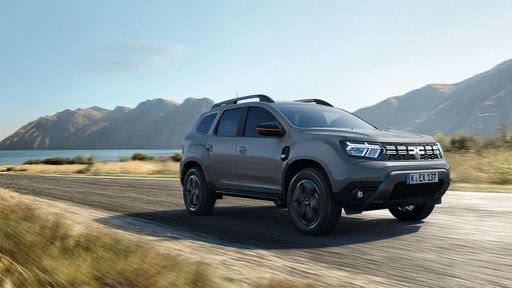 @ Dacia / Renault Group Media
@ Dacia / Renault Group Media
Dacia Duster
Dacia Duster
The Dacia Duster is a no-nonsense compact SUV that delivers rugged practicality and surprisingly comfortable everyday driving without fuss. It might not win any beauty contests, but its honest design, easy-to-live-with cabin and tough attitude make it a smart pick for buyers who want reliable transport without luxury frills.
details @ Dacia / Renault Group Media
@ Dacia / Renault Group Media
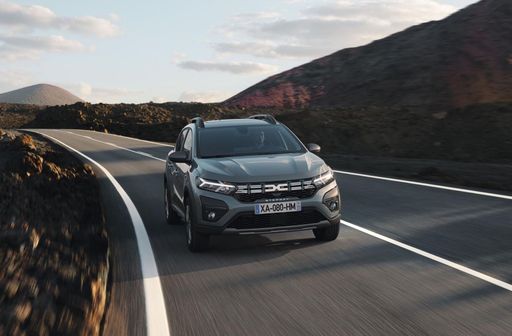 @ Dacia / Renault Group Media
@ Dacia / Renault Group Media
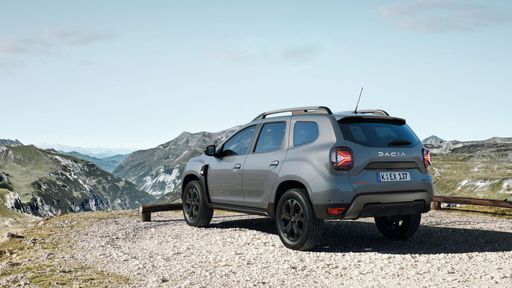 @ Dacia / Renault Group Media
@ Dacia / Renault Group Media
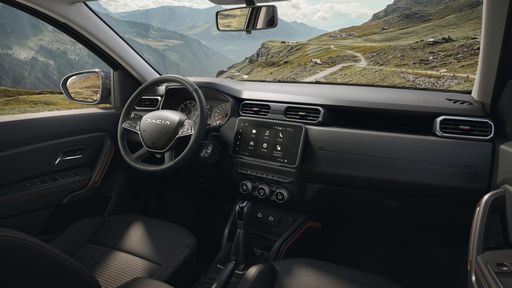 @ Dacia / Renault Group Media
@ Dacia / Renault Group Media
Suzuki S-Cross
The Suzuki S-Cross emerges as a versatile crossover, blending urban agility with a rugged presence suited for diverse terrains. Its design combines sleek, modern aesthetics with practicality, offering a spacious interior that comfortably accommodates passengers and cargo for varied journeys. Drivers will appreciate the advanced technology features that enhance both driving pleasure and safety, making the S-Cross a well-rounded option for those seeking reliability and style in a compact SUV.
details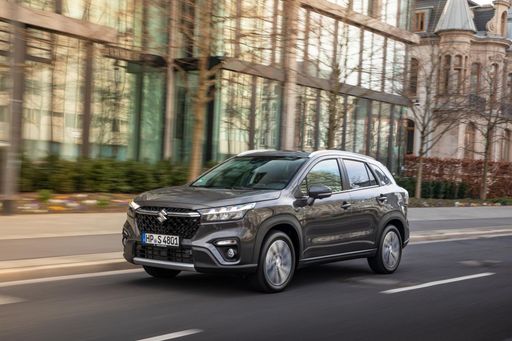 @ Suzuki Motor Corporation
@ Suzuki Motor Corporation
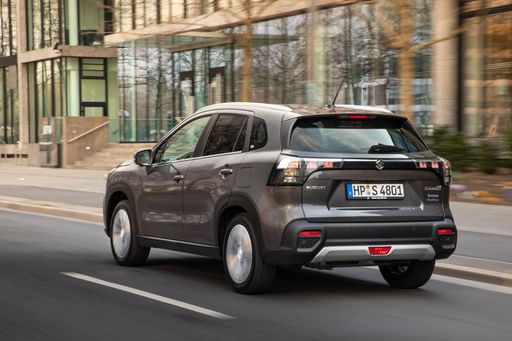 @ Suzuki Motor Corporation
@ Suzuki Motor Corporation
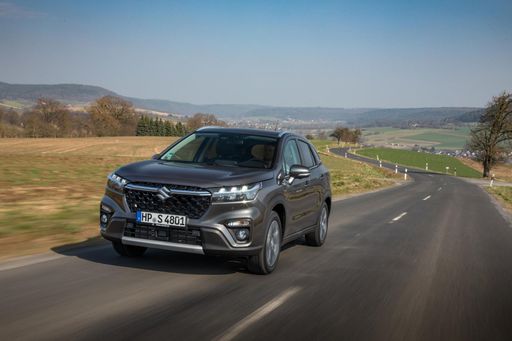 @ Suzuki Motor Corporation
@ Suzuki Motor Corporation
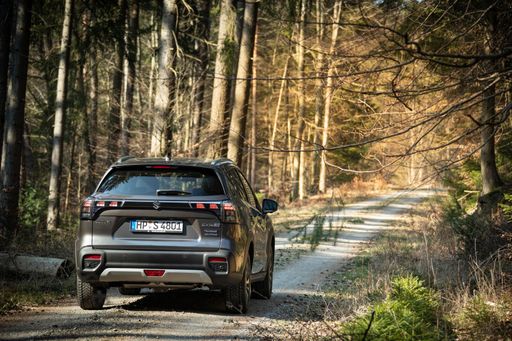 @ Suzuki Motor Corporation
@ Suzuki Motor Corporation
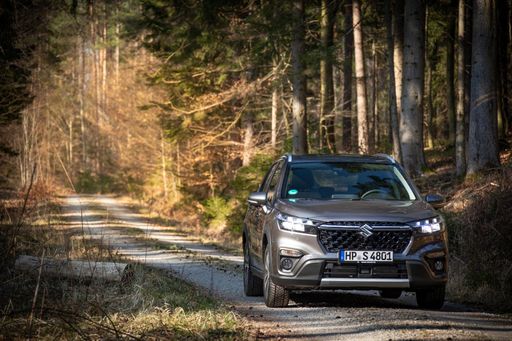 @ Suzuki Motor Corporation
@ Suzuki Motor Corporation
 @ Suzuki Motor Corporation
@ Suzuki Motor Corporation
 @ Suzuki Motor Corporation
@ Suzuki Motor Corporation
 @ Dacia / Renault Group Media
@ Dacia / Renault Group Media
|
 @ Suzuki Motor Corporation
@ Suzuki Motor Corporation
|
|
|
|
Costs and Consumption |
|
|---|---|
|
Price
16300 - 24800 £
|
Price
21800 - 33700 £
|
|
Consumption L/100km
5 - 7.6 L
|
Consumption L/100km
5.1 - 5.8 L
|
|
Consumption kWh/100km
-
|
Consumption kWh/100km
-
|
|
Electric Range
-
|
Electric Range
-
|
|
Battery Capacity
0.60 kWh
|
Battery Capacity
-
|
|
co2
113 - 148 g/km
|
co2
116 - 131 g/km
|
|
Fuel tank capacity
49 - 55 L
|
Fuel tank capacity
47 L
|
Dimensions and Body |
|
|---|---|
|
Body Type
SUV
|
Body Type
SUV
|
|
Seats
5
|
Seats
5
|
|
Doors
5
|
Doors
5
|
|
Curb weight
1351 - 1465 kg
|
Curb weight
1280 - 1435 kg
|
|
Trunk capacity
430 - 517 L
|
Trunk capacity
430 L
|
|
Length
4343 mm
|
Length
4300 mm
|
|
Width
1813 mm
|
Width
1785 mm
|
|
Height
1656 - 1661 mm
|
Height
1580 mm
|
|
Max trunk capacity
1545 - 1609 L
|
Max trunk capacity
1230 L
|
|
Payload
414 - 430 kg
|
Payload
375 - 405 kg
|
Engine and Performance |
|
|---|---|
|
Engine Type
LPG, Full Hybrid, Petrol MHEV
|
Engine Type
Full Hybrid, Petrol MHEV
|
|
Transmission
Manuel, Automatic
|
Transmission
Automatic, Manuel
|
|
Transmission Detail
Manual Gearbox, Automated Manual
|
Transmission Detail
Automated Manual, Manual Gearbox
|
|
Drive Type
Front-Wheel Drive, All-Wheel Drive
|
Drive Type
Front-Wheel Drive, All-Wheel Drive
|
|
Power HP
91 - 140 HP
|
Power HP
116 - 129 HP
|
|
Acceleration 0-100km/h
9.9 - 14 s
|
Acceleration 0-100km/h
9.50 s
|
|
Max Speed
160 - 180 km/h
|
Max Speed
175 - 195 km/h
|
|
Torque
160 - 230 Nm
|
Torque
235 Nm
|
|
Number of Cylinders
3 - 4
|
Number of Cylinders
4
|
|
Power kW
67 - 104 kW
|
Power kW
85 - 95 kW
|
|
Engine capacity
999 - 1598 cm3
|
Engine capacity
1373 - 1462 cm3
|
General |
|
|---|---|
|
Model Year
2024 - 2025
|
Model Year
2024
|
|
CO2 Efficiency Class
D, C, E
|
CO2 Efficiency Class
D
|
|
Brand
Dacia
|
Brand
Suzuki
|
What drivetrain options does the Dacia Duster have?
The Dacia Duster is offered with Front-Wheel Drive or All-Wheel Drive.
The prices and data displayed are estimates based on German list prices and may vary by country. This information is not legally binding.
